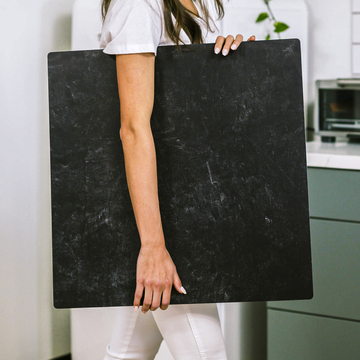Most food photographers obsess over props, lighting, and camera angles, but there's an unsung hero in every jaw-dropping shot: the backdrop board. While it might seem like just a decorative surface, your backdrop board is far more than a pretty face. Beneath its style lies a world of overlooked technical detail that could make-or break-your next food shoot.
So, what if you could choose your board not only for color and vibe, but for how its surface and structure interact with light and color science? Let’s peel back the layers and reveal what’s really at play every time you set down a plate.
Texture: More Than Meets the Eye
When most people mention “texture” in a backdrop, they're talking about looks-a convincing faux marble or a photorealistic grain. But for serious creators, texture is about microstructure. Imagine tiny hills and valleys, invisible to the naked eye but crucial to the way light dances across your setup.
Here's how this matters:
- Light Reflection: Shiny, smooth boards bounce back light in sharp, glare-filled ways-hello, blown-out highlights! In contrast, a matte surface subtly scatters light, gently revealing a loaf’s golden crust or the sheen of honey without overwhelming your food with shine.
- Shadow Quality: Rugged, softly textured boards diffuse shadows. This gives you depth and dimension without the hard lines that budget vinyls tend to leave behind.
Next time you shoot, tilt your board toward a light. Does it glare, or does it bloom with a quiet glow? That small difference can elevate a soggy-looking salad into a hero dish.
The Hidden Language of Color
If you’ve ever noticed white plates mysteriously turning blue or your fresh bread looking a little dull, you’re not imagining it. Boards with cheap printing can have unpredictable color casts that throw off your entire composition. The secret lies in how a backdrop’s pigments and coatings interact with light-what photographers call its “reflectance spectrum.”
- Subsurface Scattering: High-end boards often mimic real stone or wood’s ability to let some light pass through, then subtly re-emit it. This makes your china sparkle and your food glow-as if lit from within.
- Color Purity: Premium surfaces use carefully calibrated pigments to keep colors true. That means creamy whites, ripe reds, and leafy greens all look the way nature intended-no more unexpected blue or green hues creeping in under studio lights.
Advanced Combo: Layering Surfaces for Storytelling
If you’re looking to add emotional impact or narrative edge, try layering different backdrops in a single frame. Nestle your main course on a marble board and choreograph a rustic wood background behind. The marble lends a delicate, gourmet highlight, while the wood delivers hearth and home vibes. This combo creates visual storytelling-almost as if your scene is breathing with subtle, crafted life.
Maintenance: The Overlooked Factor in Consistency
A backdrop board’s ability to handle regular cleaning and avoid micro-scratches is a surprising yet vital feature. Those tiny marks show up brightest where you least want them: under hard light and in professional close-ups. Invest in boards built to withstand a rigorous cleaning routine, and you’ll save yourself hours in retouching later on.
Making the Most of Your Backdrops: Pro Tips
- Test with Raking Light: Place a direct light source at a sharp angle and look for gentle glow instead of harsh glare.
- Use a Color Checker: Snap a quick shot of a color reference patch on the board to spot any sneaky unwanted tints before you start shooting food.
- Mix and Match: Layer two boards with different surfaces and see how they interact with your subject and your light-the results might surprise you.
The Backdrop as Creative Lens
Choosing a great backdrop board isn’t just about aesthetics. It’s about engineering light, preserving color integrity, and telling a richer story-qualities that can set your work apart in a crowded visual world. When you realize how much these factors subtly shift the mood and realism of your food photography, you’ll never look at a board as just a backdrop again.
So next time you reach for a new surface, ask yourself: Is this board just pretty, or is it setting my work up for its best shot yet?


